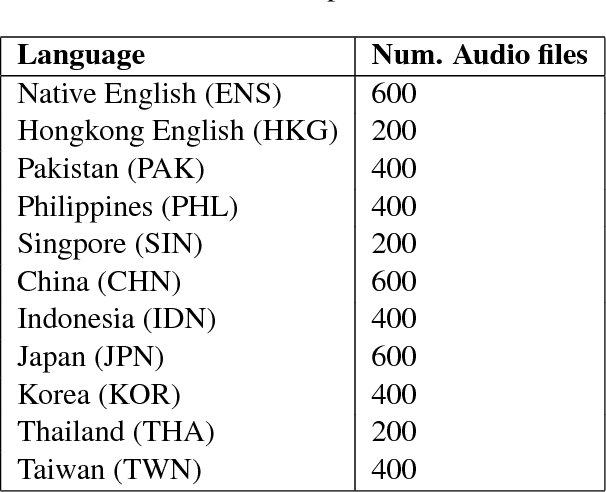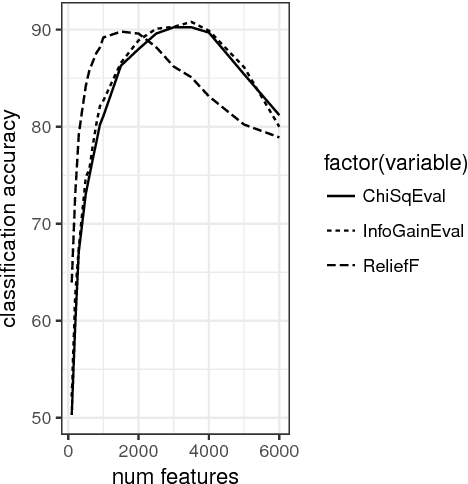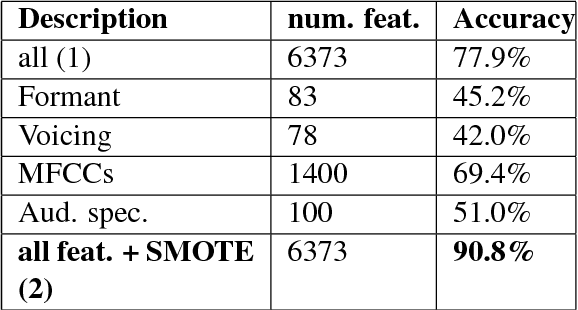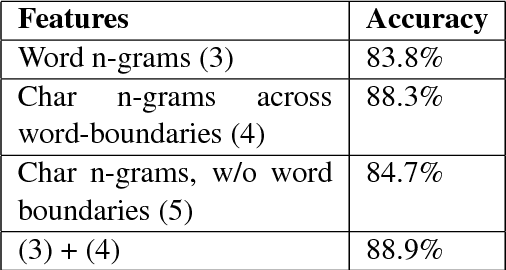Ziwei Zhou
Daily-Omni: Towards Audio-Visual Reasoning with Temporal Alignment across Modalities
May 23, 2025Abstract:Recent Multimodal Large Language Models (MLLMs) achieve promising performance on visual and audio benchmarks independently. However, the ability of these models to process cross-modal information synchronously remains largely unexplored. In this paper, we introduce: 1) Daily-Omni, an Audio-Visual Questioning and Answering benchmark comprising 684 videos of daily life scenarios from diverse sources, rich in both audio and visual information, and featuring 1197 multiple-choice QA pairs across 6 major tasks; 2) Daily-Omni QA Generation Pipeline, which includes automatic annotation, QA generation and QA optimization, significantly improves efficiency for human evaluation and scalability of the benchmark; 3) Daily-Omni-Agent, a training-free agent utilizing open-source Visual Language Model (VLM), Audio Language Model (ALM) and Automatic Speech Recognition (ASR) model to establish a baseline for this benchmark. The results show that current MLLMs still struggle significantly with tasks requiring audio-visual integration, but combining VLMs and ALMs with simple temporal alignment techniques can achieve substantially better performance. Codes and benchmark are available at \href{https://github.com/Lliar-liar/Daily-Omni}{https://github.com/Lliar-liar/Daily-Omni}.
OccRob: Efficient SMT-Based Occlusion Robustness Verification of Deep Neural Networks
Jan 27, 2023Abstract:Occlusion is a prevalent and easily realizable semantic perturbation to deep neural networks (DNNs). It can fool a DNN into misclassifying an input image by occluding some segments, possibly resulting in severe errors. Therefore, DNNs planted in safety-critical systems should be verified to be robust against occlusions prior to deployment. However, most existing robustness verification approaches for DNNs are focused on non-semantic perturbations and are not suited to the occlusion case. In this paper, we propose the first efficient, SMT-based approach for formally verifying the occlusion robustness of DNNs. We formulate the occlusion robustness verification problem and prove it is NP-complete. Then, we devise a novel approach for encoding occlusions as a part of neural networks and introduce two acceleration techniques so that the extended neural networks can be efficiently verified using off-the-shelf, SMT-based neural network verification tools. We implement our approach in a prototype called OccRob and extensively evaluate its performance on benchmark datasets with various occlusion variants. The experimental results demonstrate our approach's effectiveness and efficiency in verifying DNNs' robustness against various occlusions, and its ability to generate counterexamples when these DNNs are not robust.
The Relevance of Text and Speech Features in Automatic Non-native English Accent Identification
Apr 16, 2018



Abstract:This paper describes our experiments with automatically identifying native accents from speech samples of non-native English speakers using low level audio features, and n-gram features from manual transcriptions. Using a publicly available non-native speech corpus and simple audio feature representations that do not perform word/phoneme recognition, we show that it is possible to achieve close to 90% classification accuracy for this task. While character n-grams perform similar to speech features, we show that speech features are not affected by prompt variation, whereas ngrams are. Since the approach followed can be easily adapted to any language provided we have enough training data, we believe these results will provide useful insights for the development of accent recognition systems and for the study of accents in the context of language learning.
 Add to Chrome
Add to Chrome Add to Firefox
Add to Firefox Add to Edge
Add to Edge